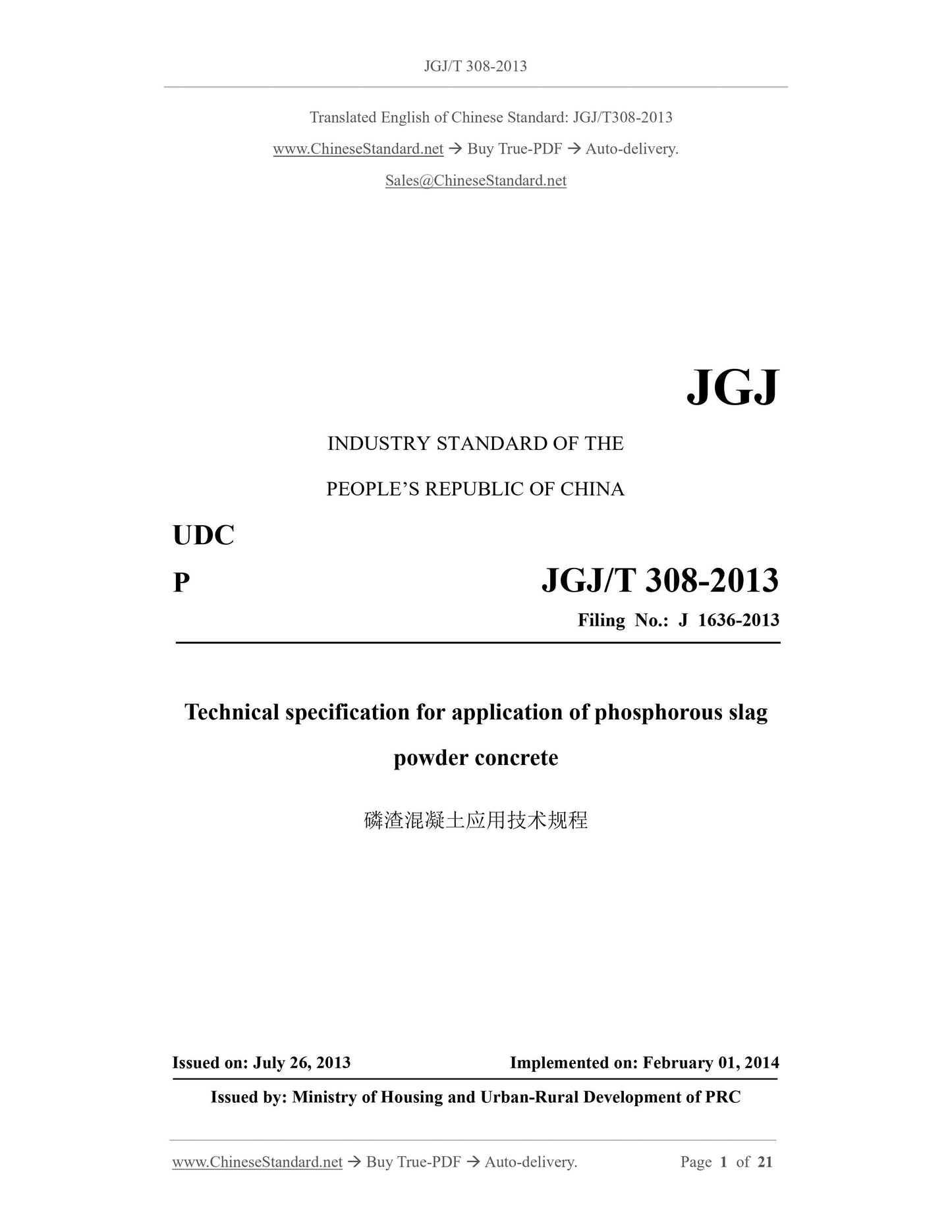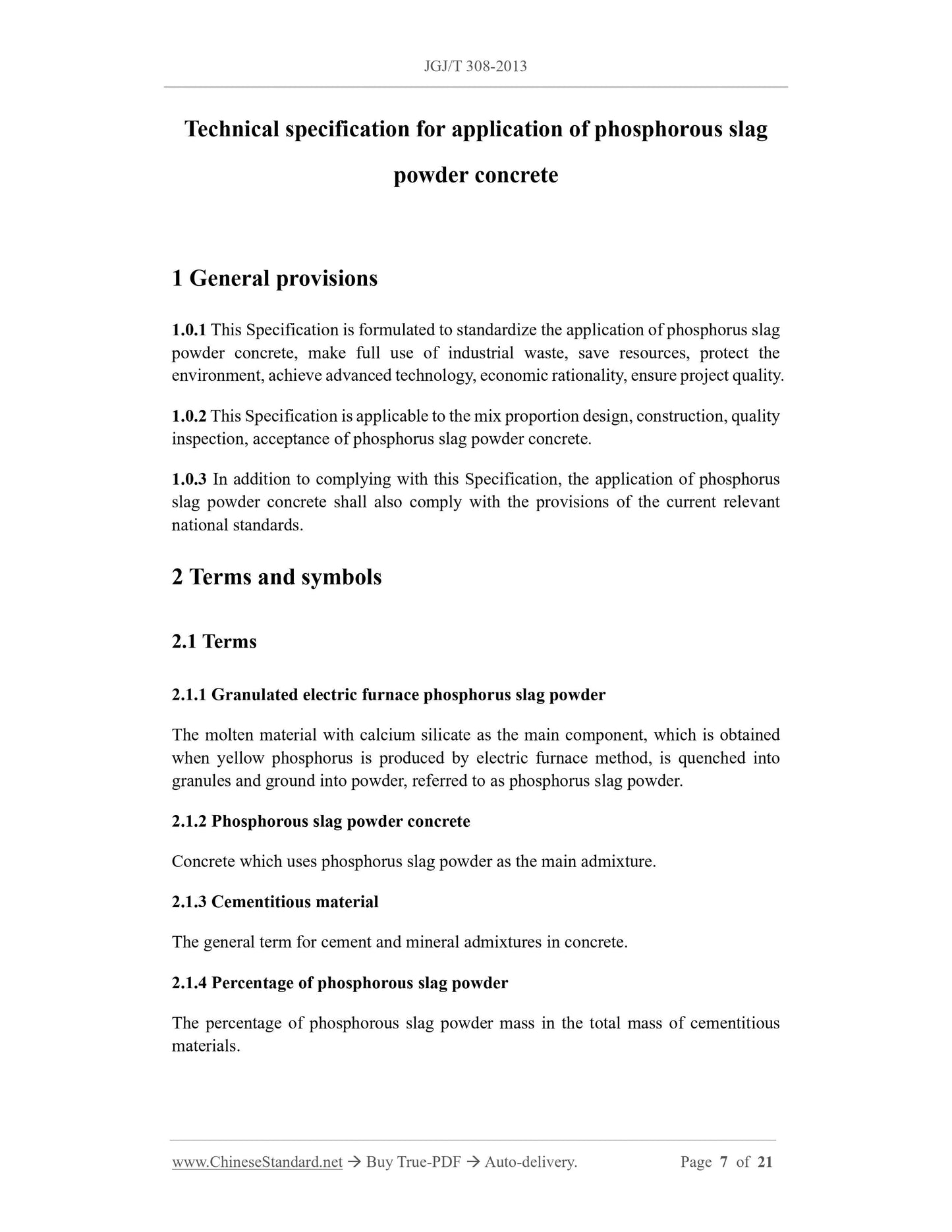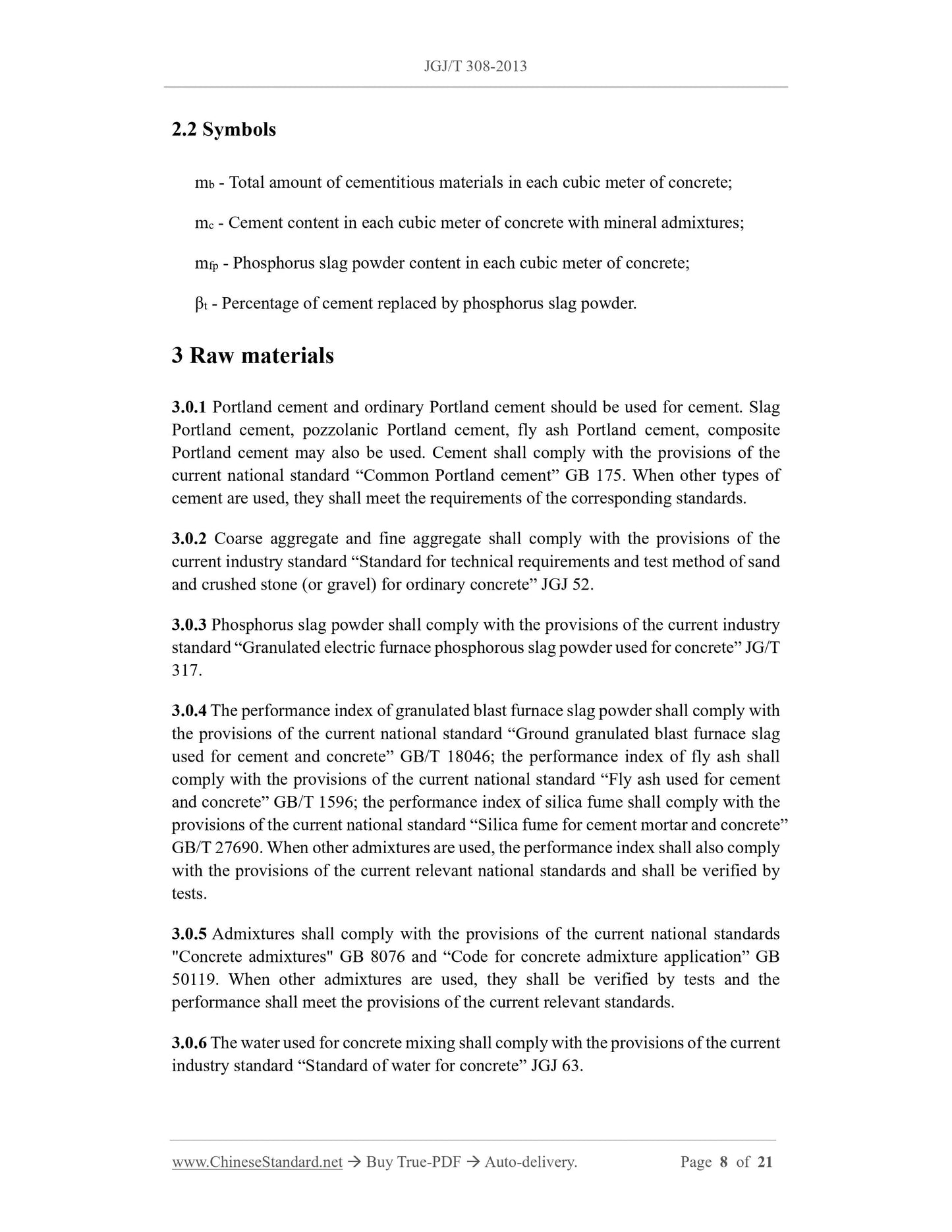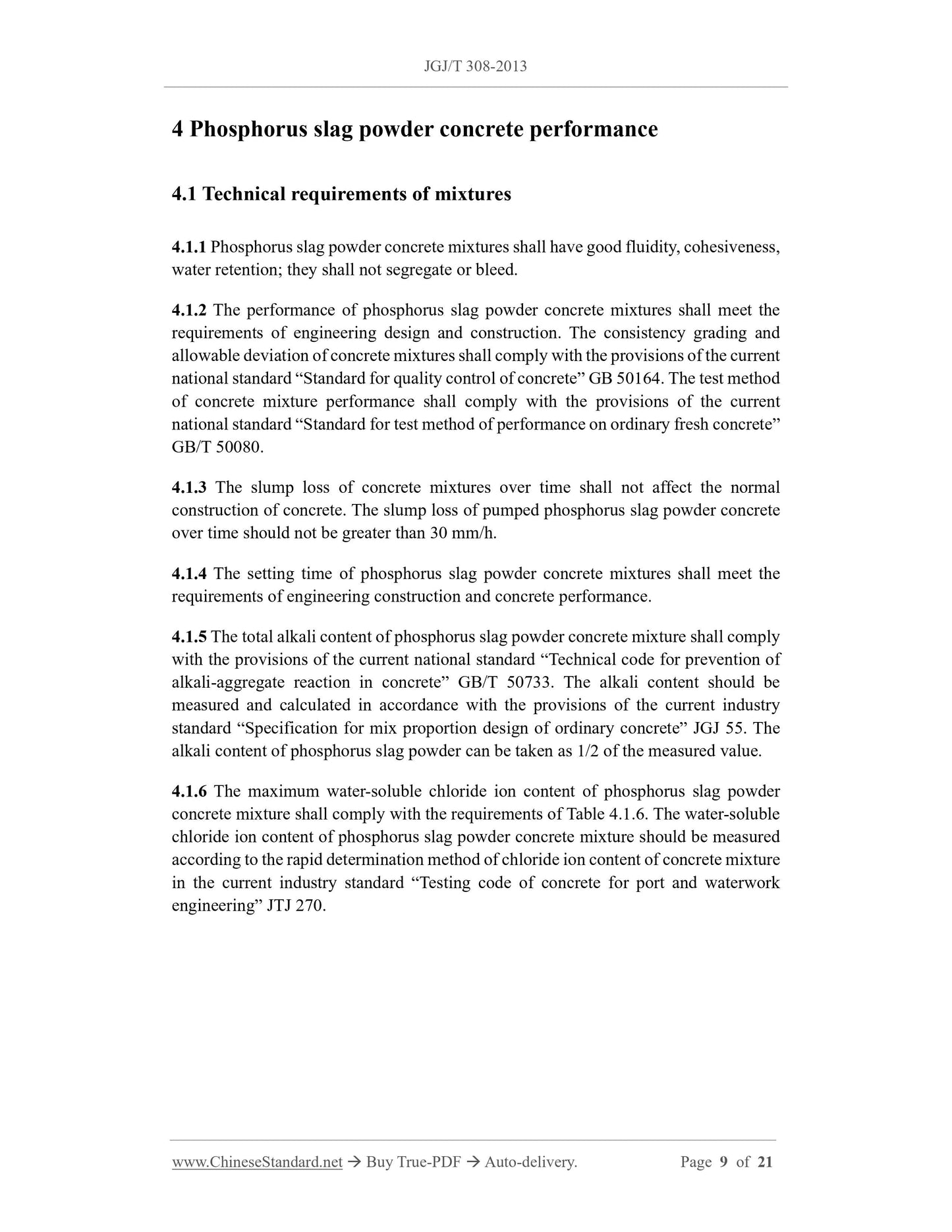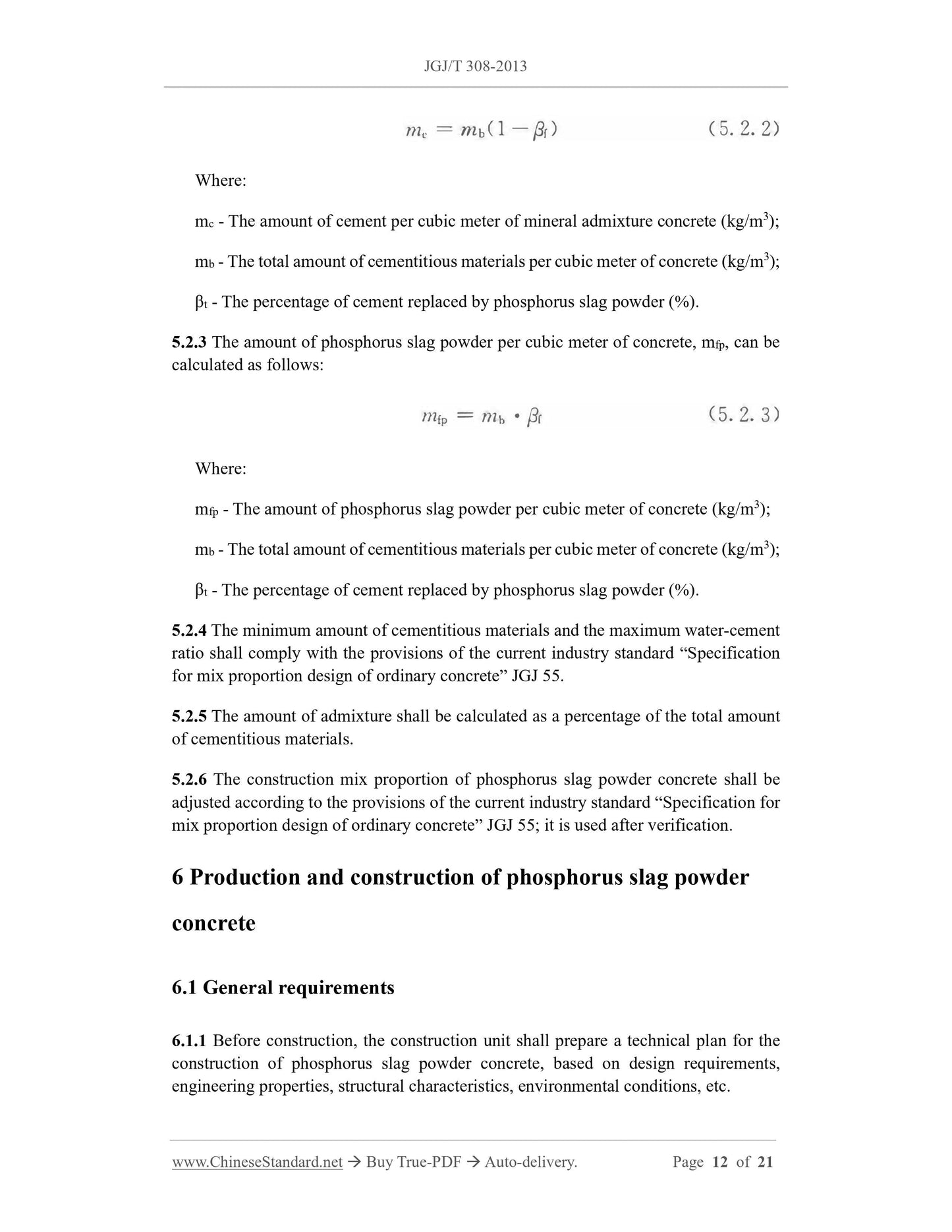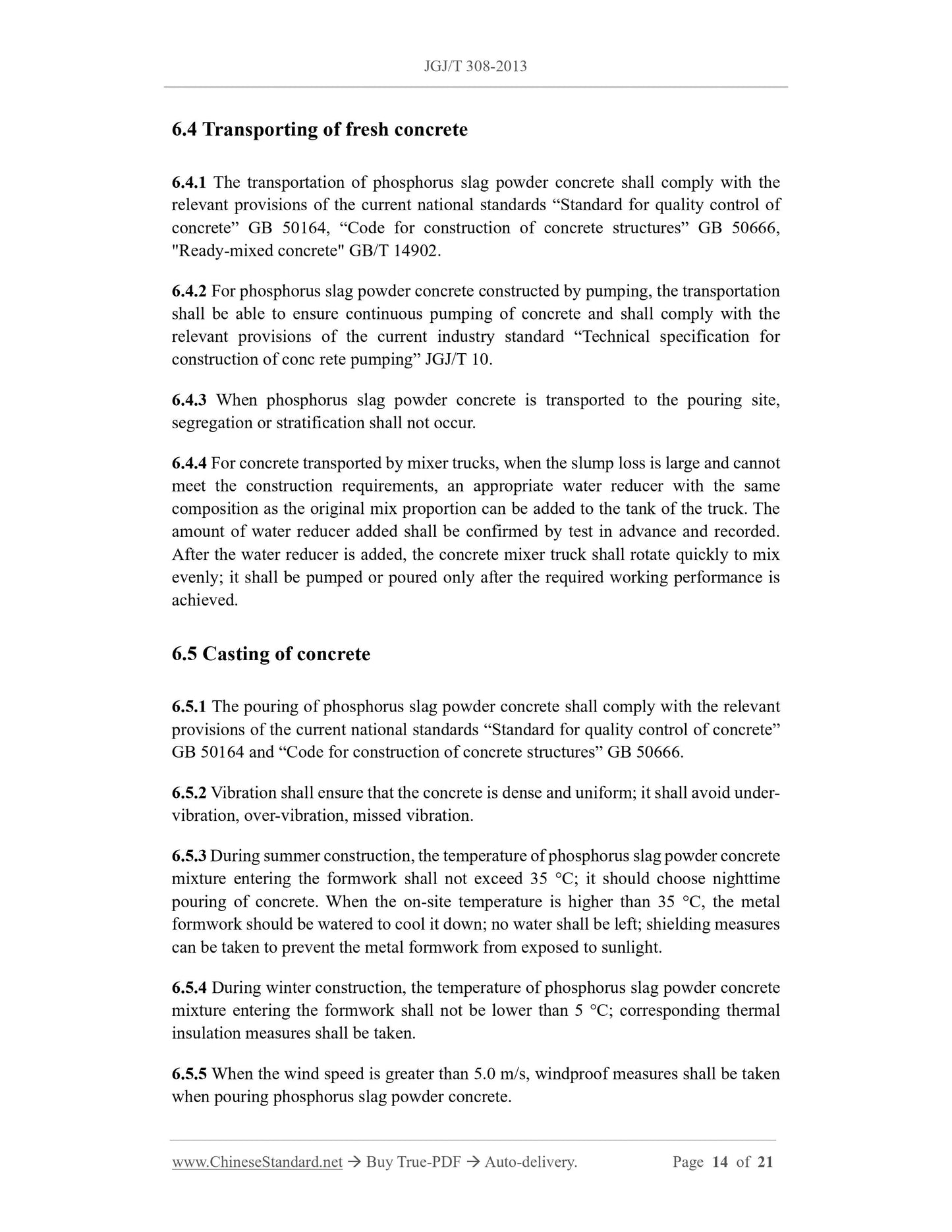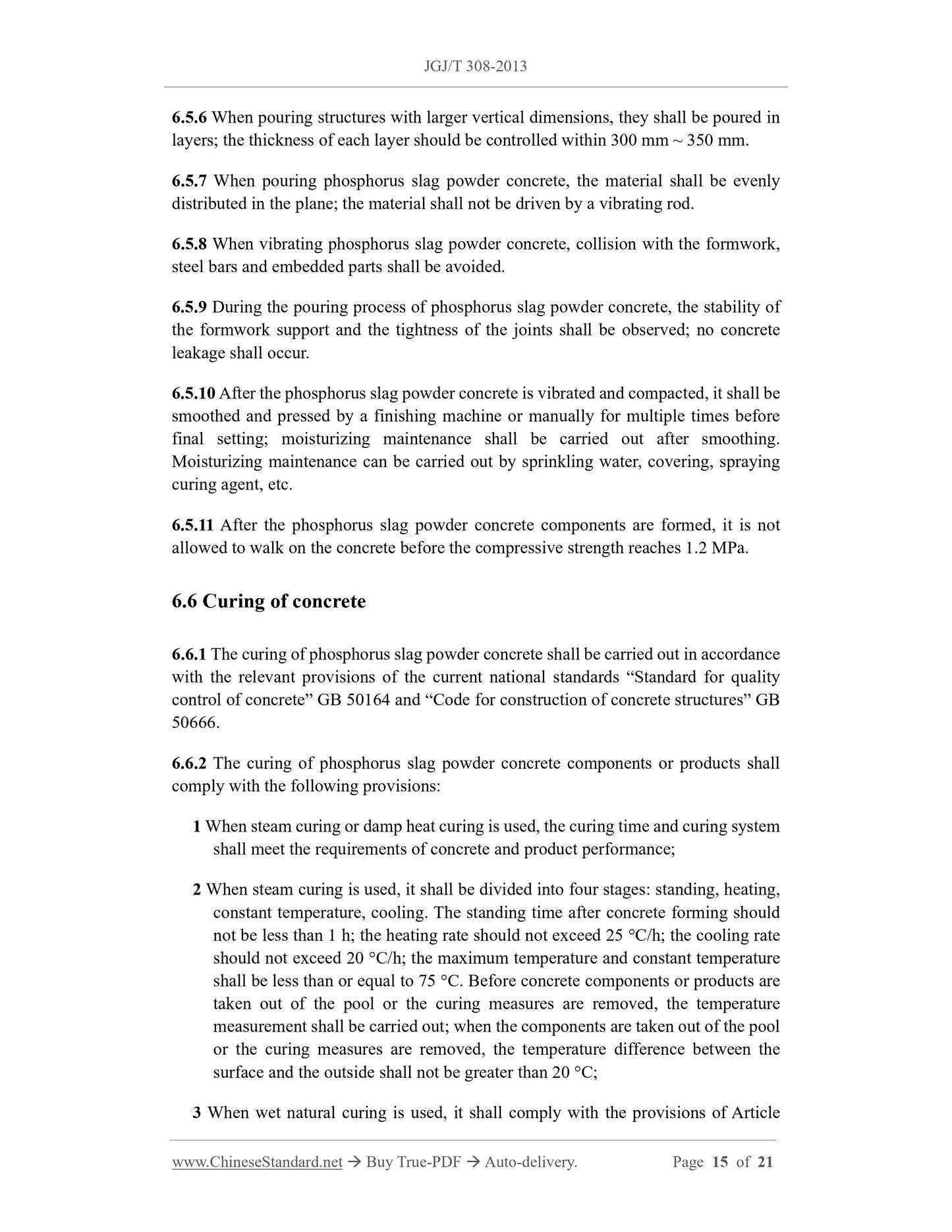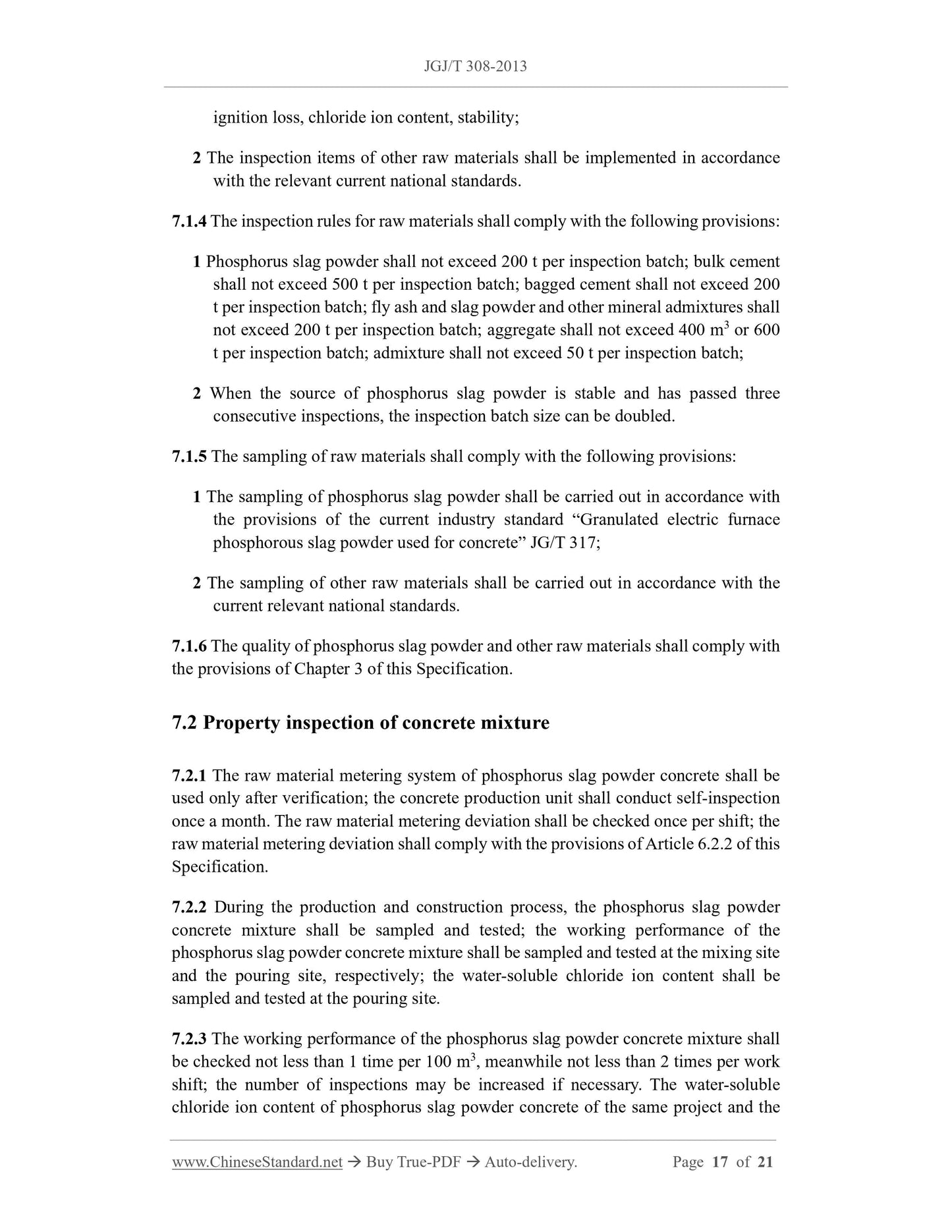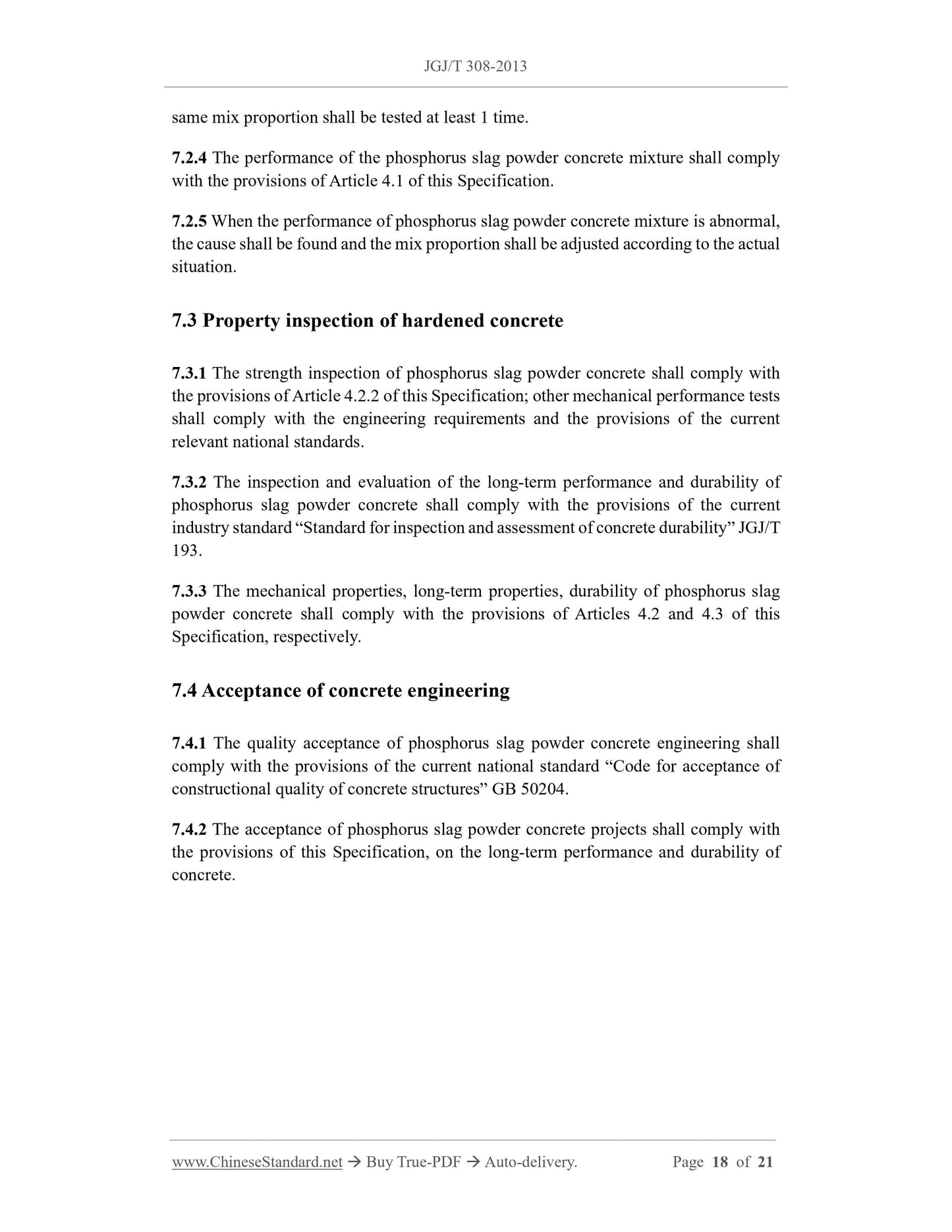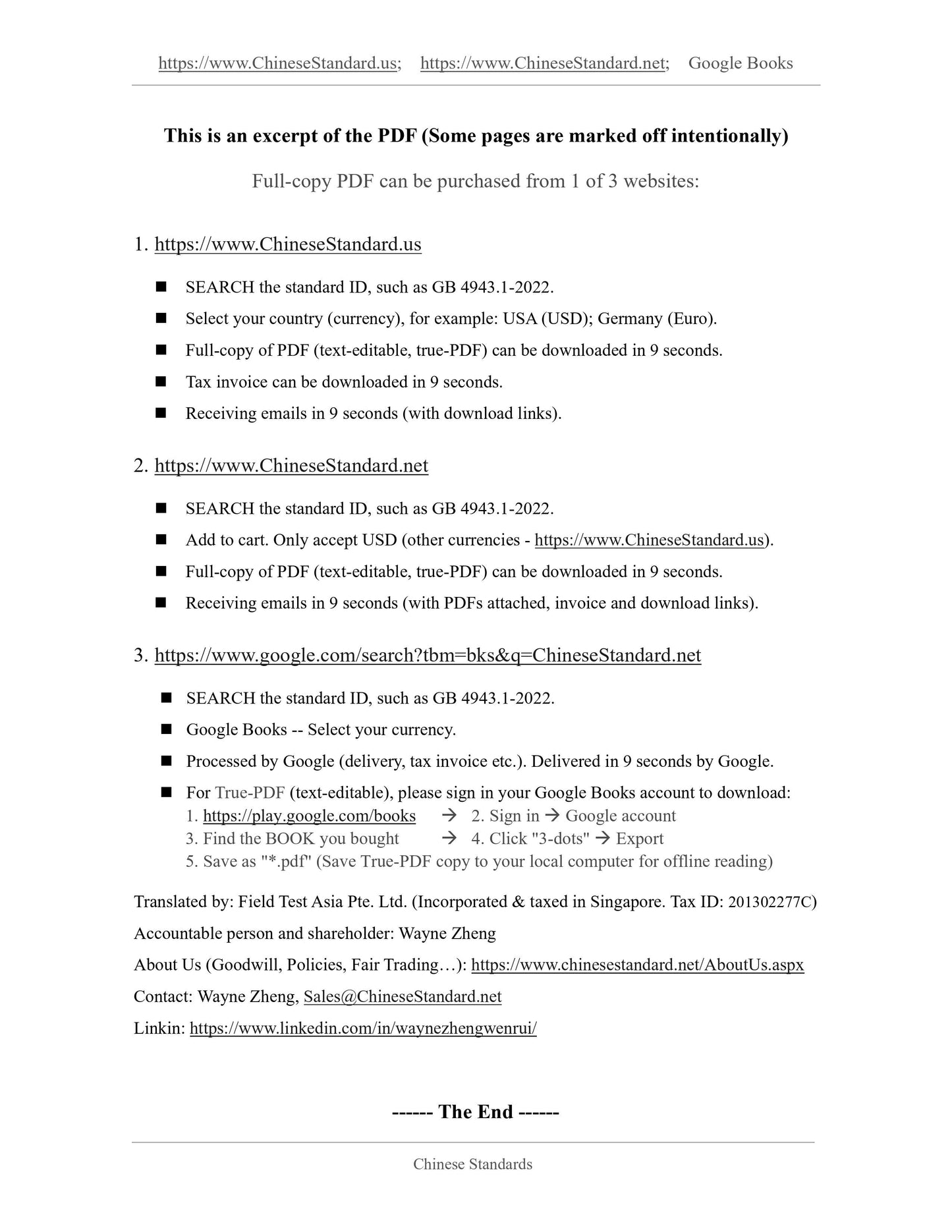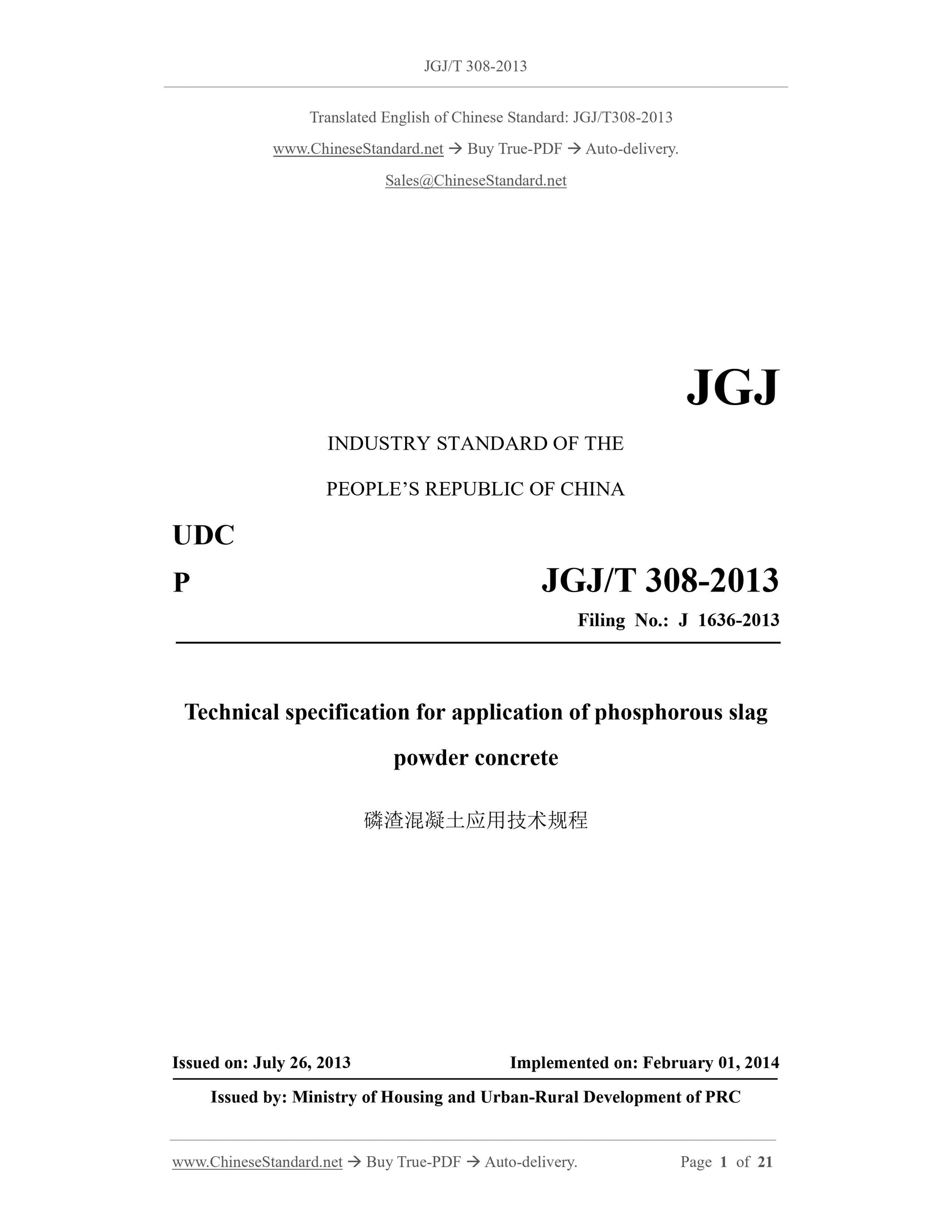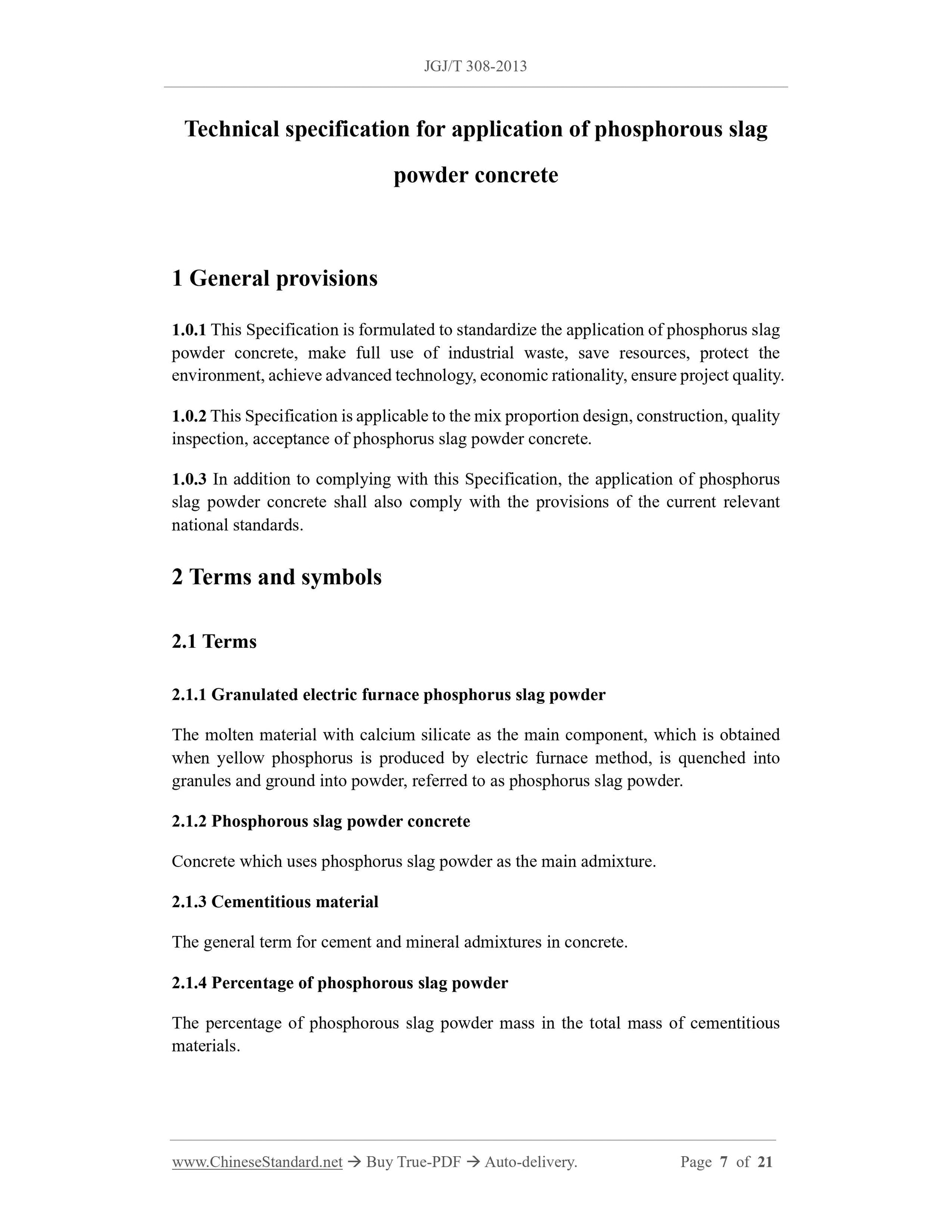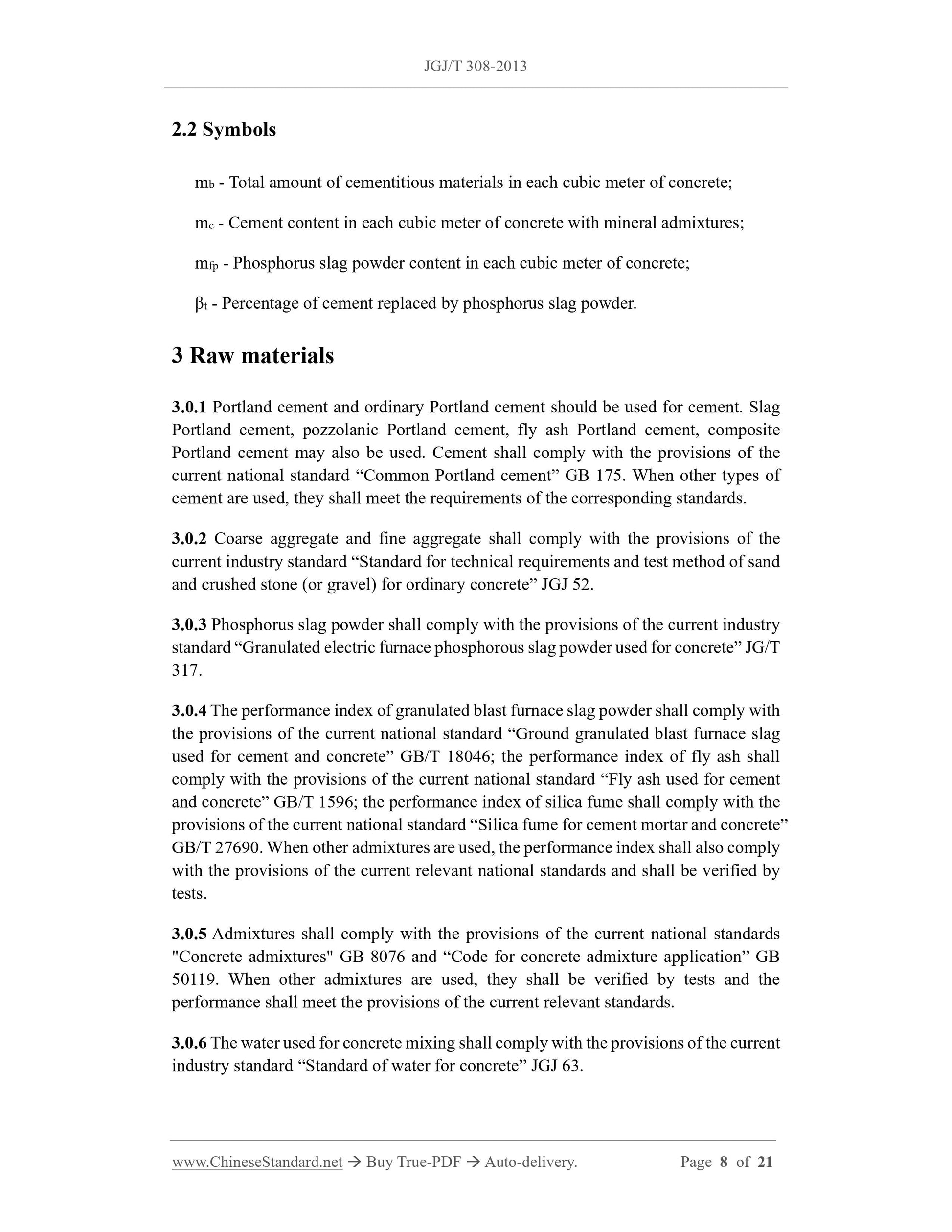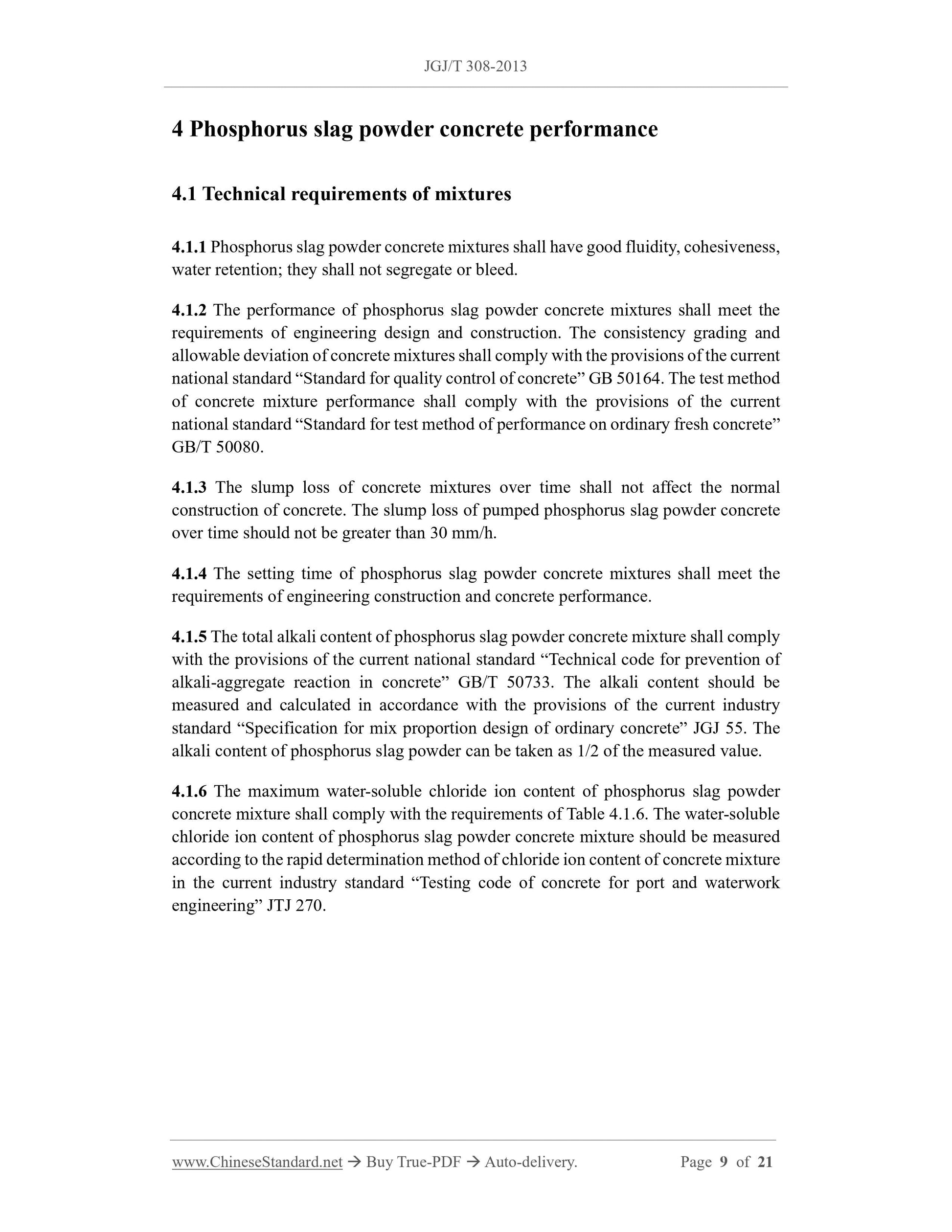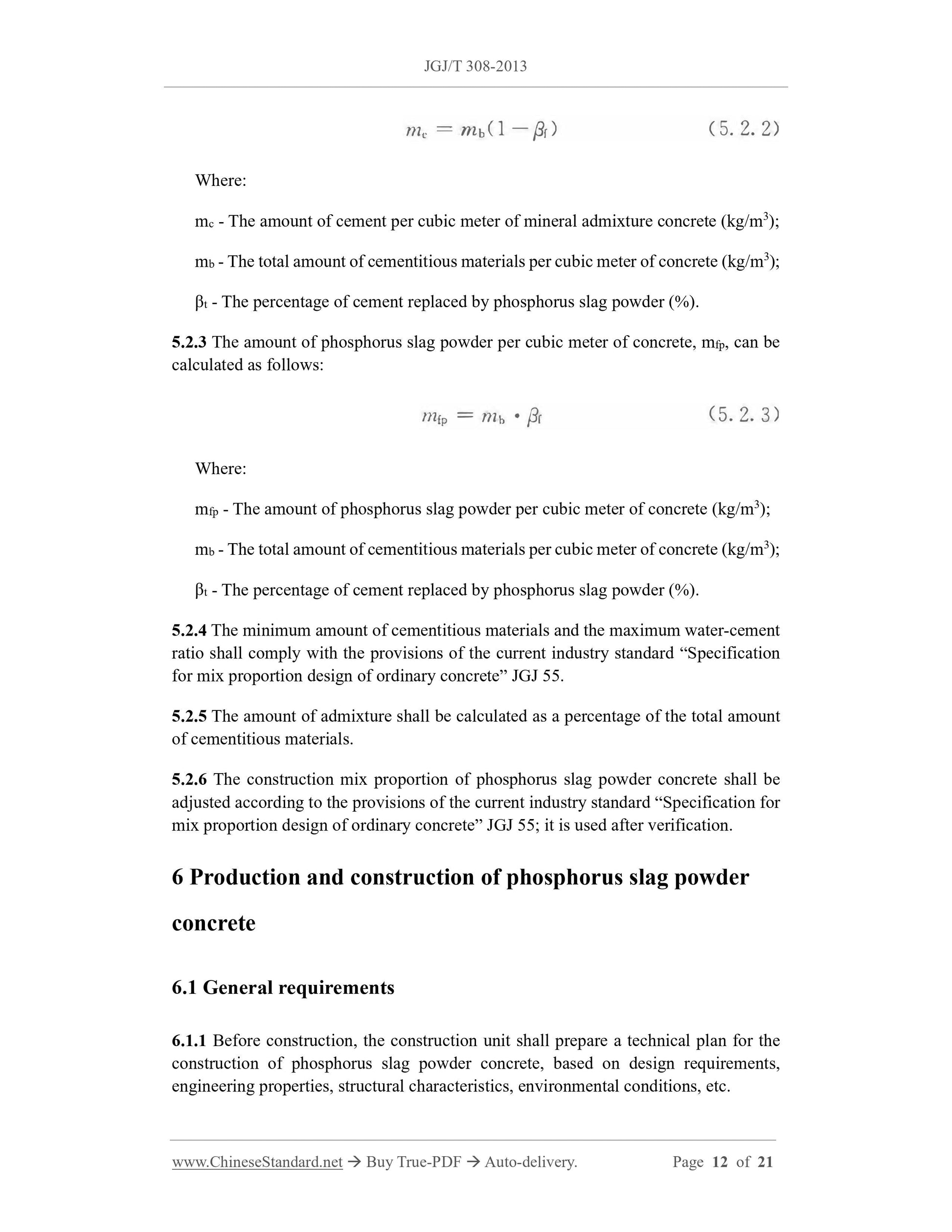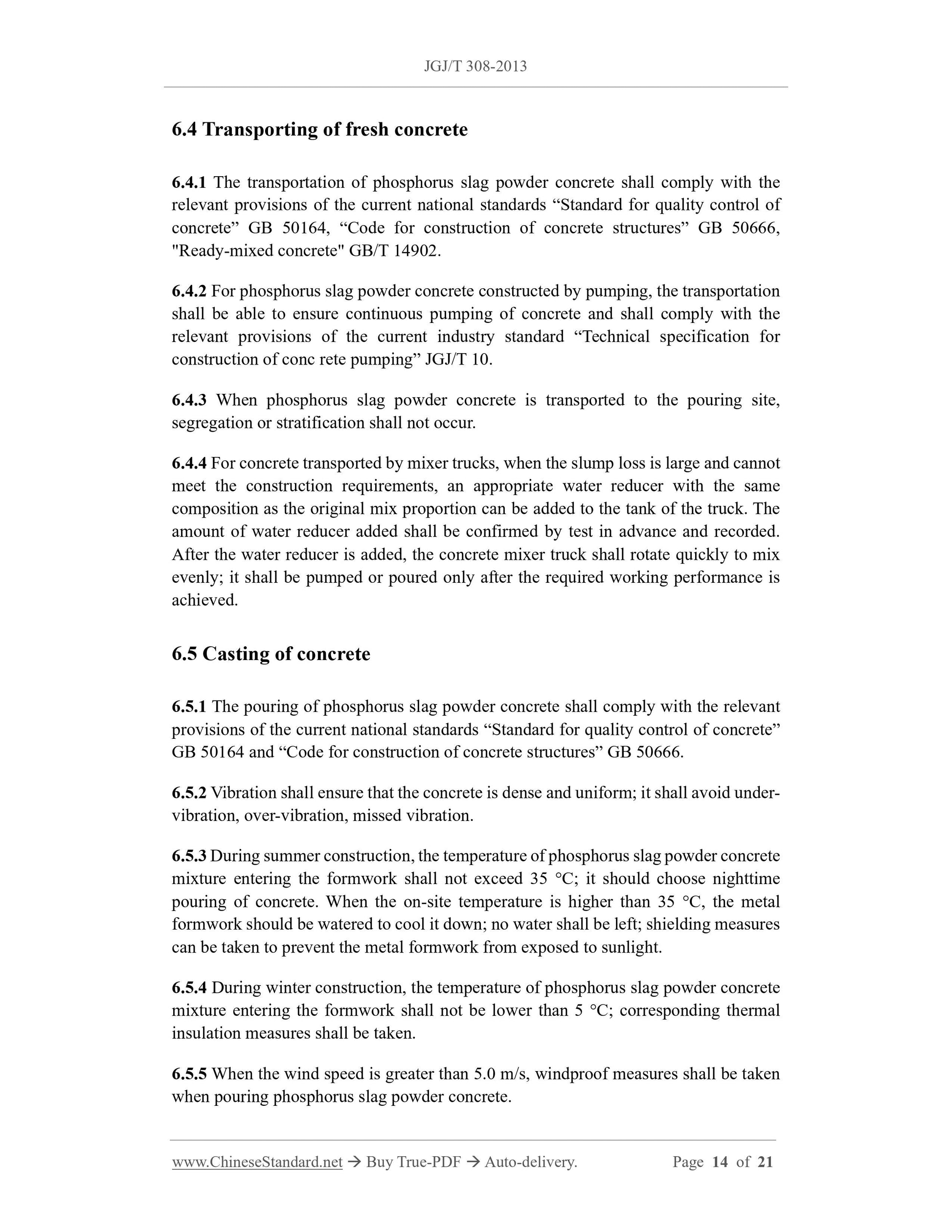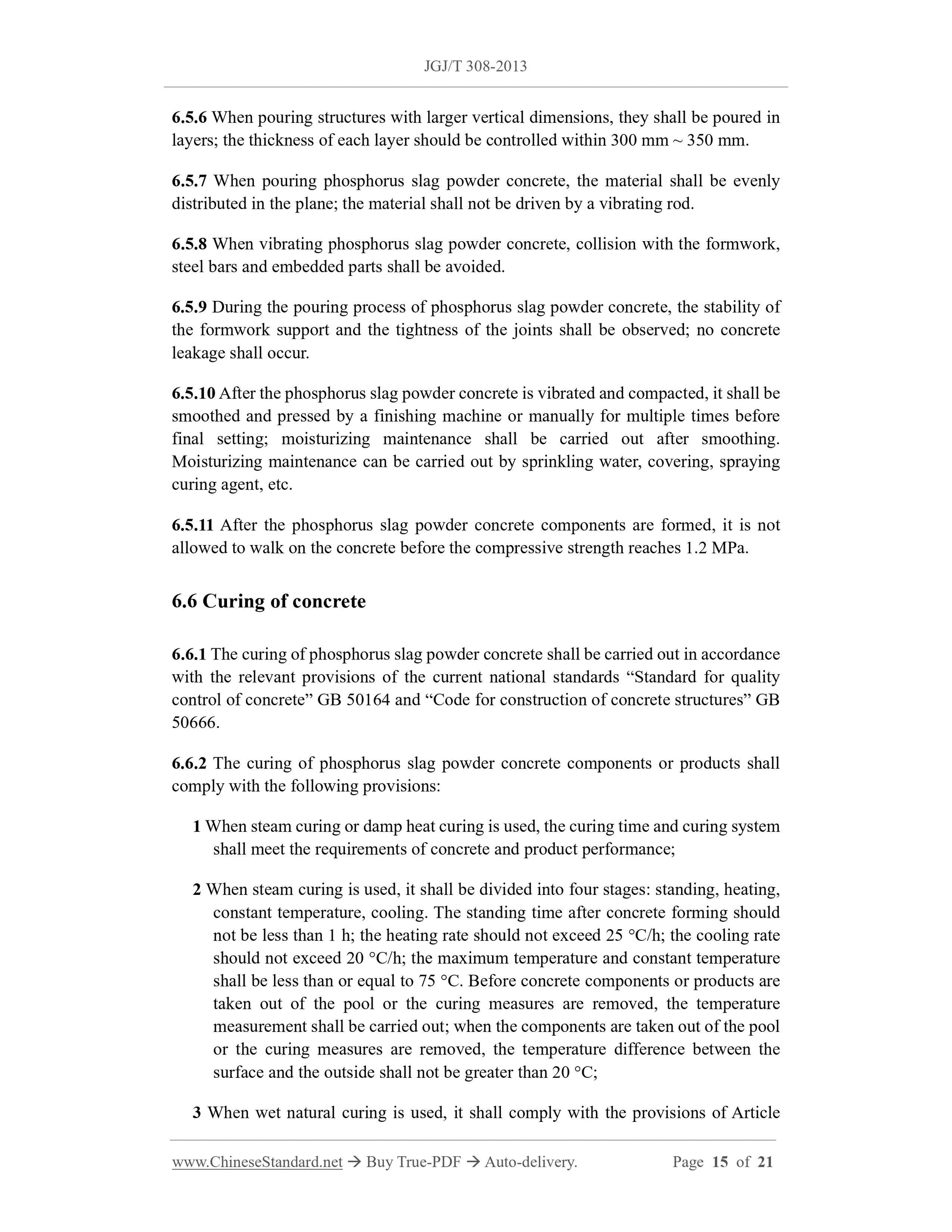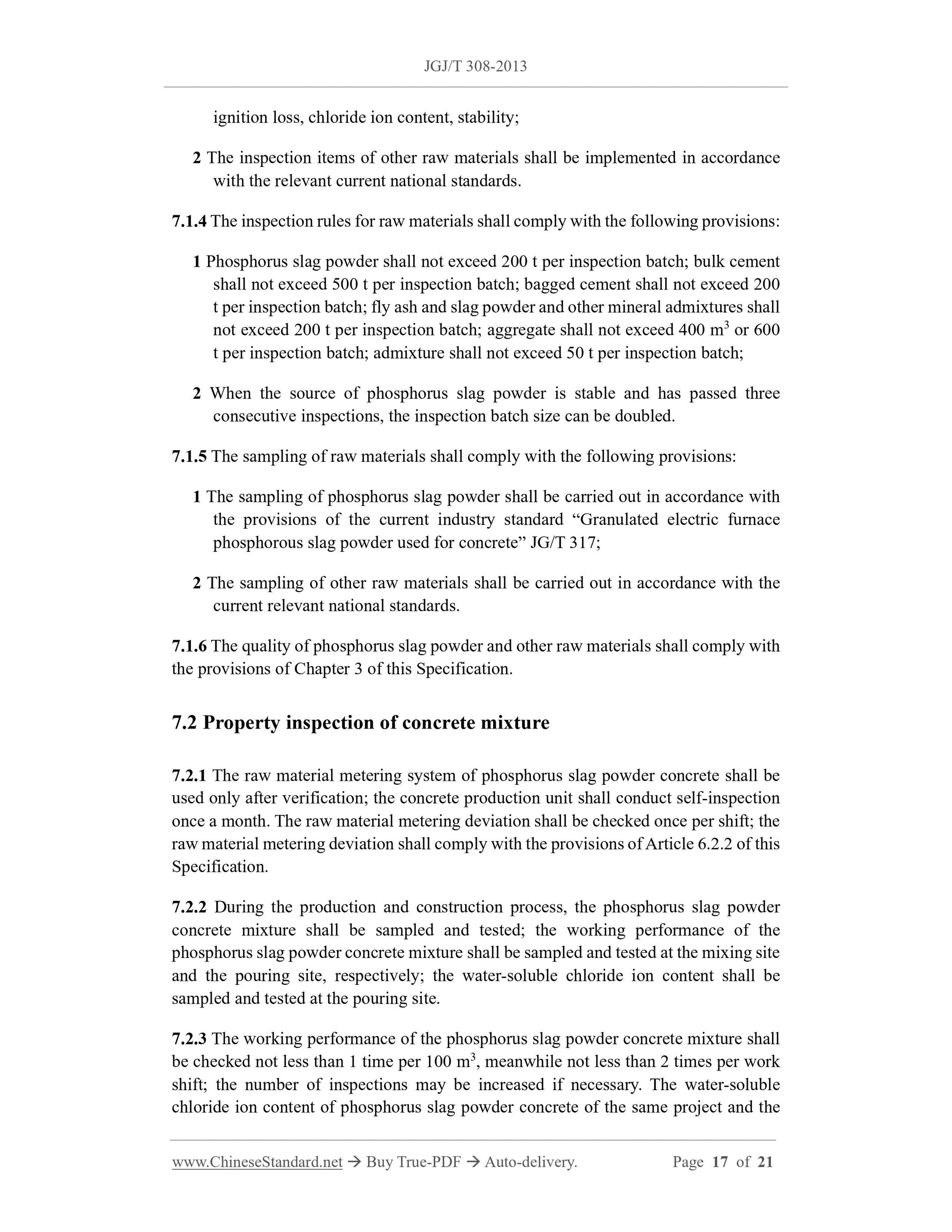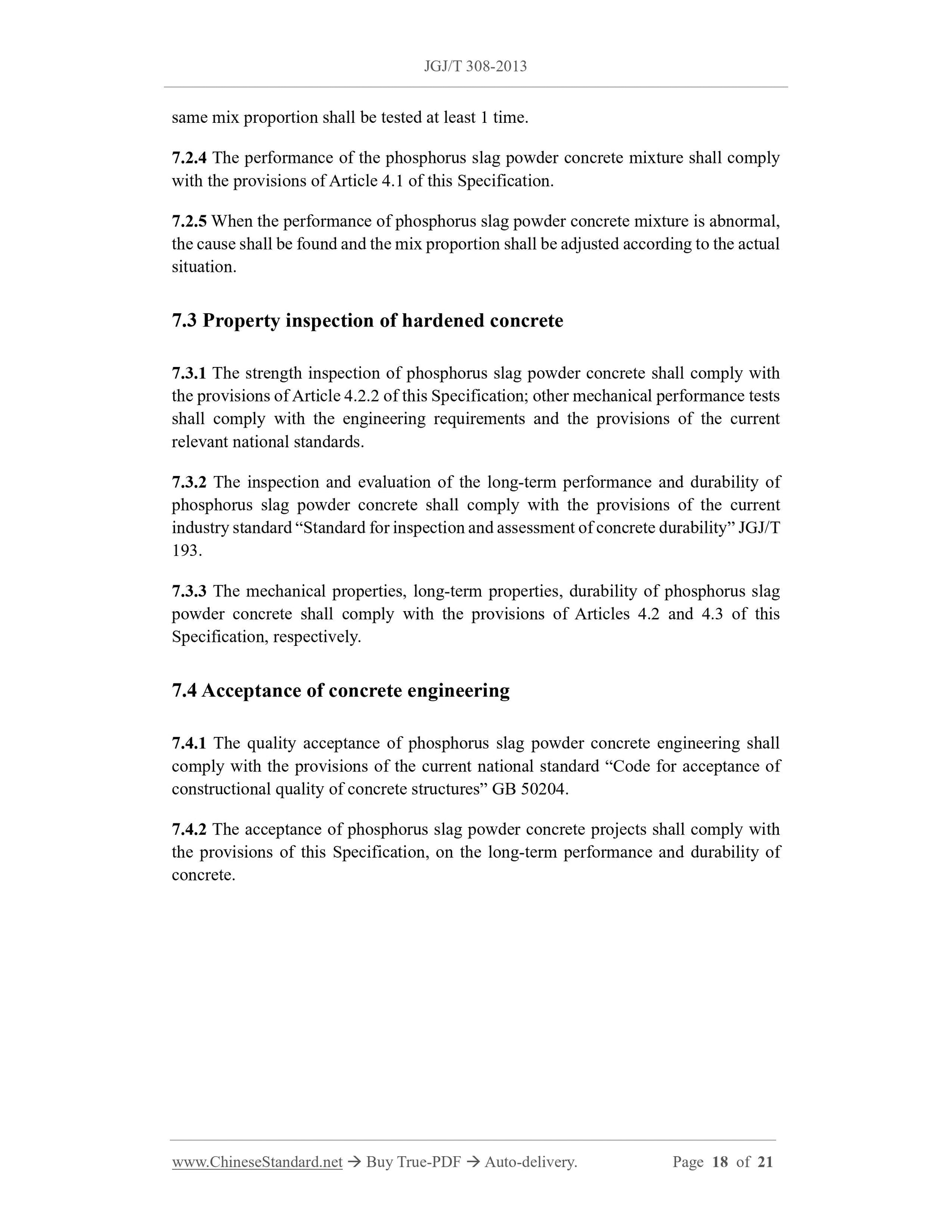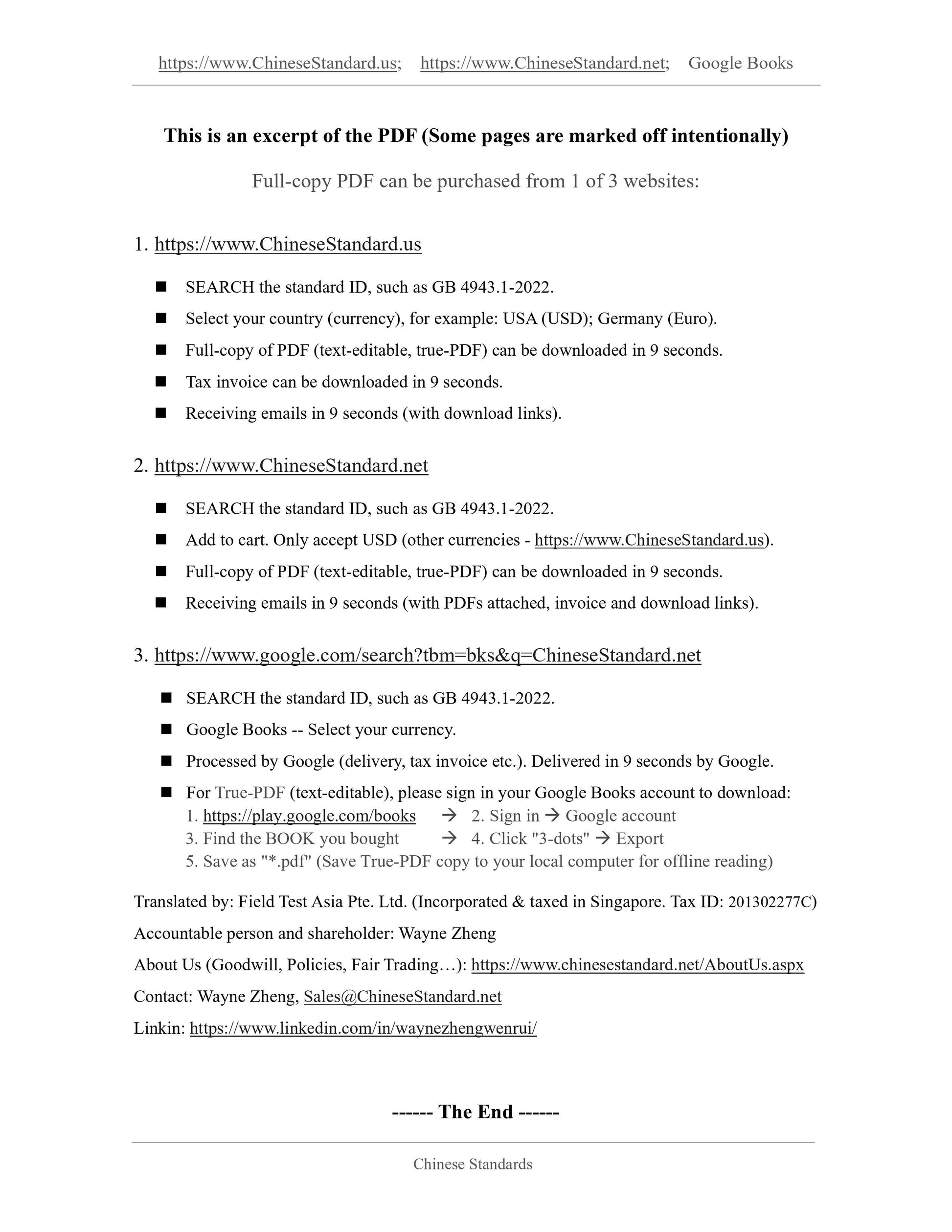1
/
of
10
www.ChineseStandard.us -- Field Test Asia Pte. Ltd.
JGJ/T 308-2013 English PDF (JGJ/T308-2013)
JGJ/T 308-2013 English PDF (JGJ/T308-2013)
Regular price
$335.00
Regular price
Sale price
$335.00
Unit price
/
per
Shipping calculated at checkout.
Couldn't load pickup availability
JGJ/T 308-2013: Technical specification liar application of phosphorous slag powder concrete
Delivery: 9 seconds. Download (and Email) true-PDF + Invoice.Get Quotation: Click JGJ/T 308-2013 (Self-service in 1-minute)
Newer / historical versions: JGJ/T 308-2013
Preview True-PDF
Scope
1.0.1 This Specification is formulated to standardize the application of phosphorus slagpowder concrete, make full use of industrial waste, save resources, protect the
environment, achieve advanced technology, economic rationality, ensure project quality.
1.0.2 This Specification is applicable to the mix proportion design, construction, quality
inspection, acceptance of phosphorus slag powder concrete.
1.0.3 In addition to complying with this Specification, the application of phosphorus
slag powder concrete shall also comply with the provisions of the current relevant
national standards.
Basic Data
| Standard ID | JGJ/T 308-2013 (JGJ/T308-2013) |
| Description (Translated English) | Technical specification liar application of phosphorous slag powder concrete |
| Sector / Industry | Building and Construction Industry Standard (Recommended) |
| Classification of Chinese Standard | Q13 |
| Classification of International Standard | 91.100.30 |
| Word Count Estimation | 24,288 |
| Quoted Standard | GB 50010; GB/T 50080; GB/T 50081; GB/T 50082; GB/T 50107; GB 50119; GB 50164; GB 50204; GB 50666; GB/T 50733; GB 175; GB/T 1596; GB 8076; GB/T 9142; GB/T 14902; GB/T 18046; GB/T 27690; JGJ/T 104; JGJ/T 193; JG/T 317; JTJ 270 |
| Regulation (derived from) | Announcement of the Ministry of Housing and Urban-Rural Development No. 88 |
| Issuing agency(ies) | Ministry of Housing and Urban-Rural Development of the People's Republic of China |
| Summary | This standard applies to phosphorus slag concrete mix design, construction, quality inspection and acceptance. |
Share
